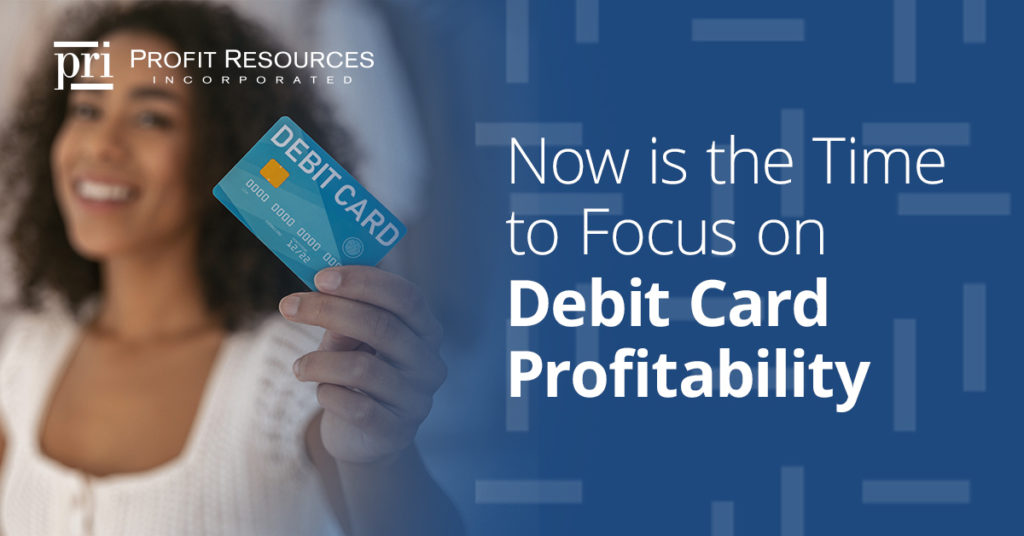
As we continue to grow and evolve in response to a global pandemic, financial institutions are accepting that the 2021 world of banking will look much different from that of 2019. The good news is that experts are predicting a relatively healthy rebound from the first half of 2020, but they are also warning that FIs need to get into the game now or they will be left behind. The old paradigms have no weight, and benchmarks, while still good, need to be tweaked to fit the current situation.
There has never been a better time than now to focus on tracking and measuring profitability and performance of debit cards. A thorough profitability analysis is the end goal, and the first step is knowing what true profitability is.
Traditionally in community banking, there is not a dedicated team looking at the total profitability of the debit card program. There may be no one at the bank or credit union who is responsible for how to change the structure of their program to generate more debit card interchange income or where and how to shave expenses effectively. Bankers who are typically very risk-averse may dwell on thoughts of fraud associated with their debit cards and may need outside experts to help them view this area as a true profit center.
Now is a perfect time to:
- Track and measure all income and expenses of your debit card portfolio. Revisit the importance of benchmarking and determine what to measure, how to value that measurement, and what to do with your findings.
- Better understand the correlation between debit card interchange income and profitability. It is not always an expected, normal correlation.Less interchange earned could also mean less expenses paid. Visa/Mastercard expenses are multi-layered and calculated by number of transactions as well as dollars spent.
- Minimize and control expenses associated with your debit card program including EFT processing, PIN POS network fees, card production, fraud losses, card design, one-time EFT costs, BIN projects and instant issue software costs.
- Focus on mobile wallet penetration and utilization. The pandemic has created an increase in contactless and online payments by people who never used these methods before. Banks and credit unions should aim to keep customers paying this way.
- Retain cardholders who use your debit card rather than a credit card for travel and cross border spending, which are the biggest debit card interchange producers. Promoting these transactions should be a strong focus.
- Bash cash. Curtail cash and check use and increase debit card use. The use of ATMs will continue to decline, and that’s a good thing.
- Focus on local data. Small communities will be insulated from much down-trend, so focus on where your cardholders are using their cards in your area and pay less attention to national or global data.
Above all, now is the time to promote positive changes. While banking will not be the same next year as it was last year, the ability to improve profitability is stronger than ever.
Profit Resources specializes in identifying profitability improvement areas for financial institutions through revenue growth, cost control, streamlining processes, and effective use of technology. Contact us to learn more about our personalized approach to propel growth and improve profitability.
Other Recent Articles
- Maximizing System Utilization: Harnessing the Potential of Reporting Systems
- Maximizing System Utilization: Understanding Parameters and Capabilities
- Community Banking Month: Competing Banks Partner to Rebuild the Community
- Community Banking Month: Sovereign Bank’s People-First Approach to Building Stronger Communities
- Maximizing System Utilization: Ditch Paper and Manual Processes
- Are Good Vendor Partnerships Leading You to Bad Ones?
